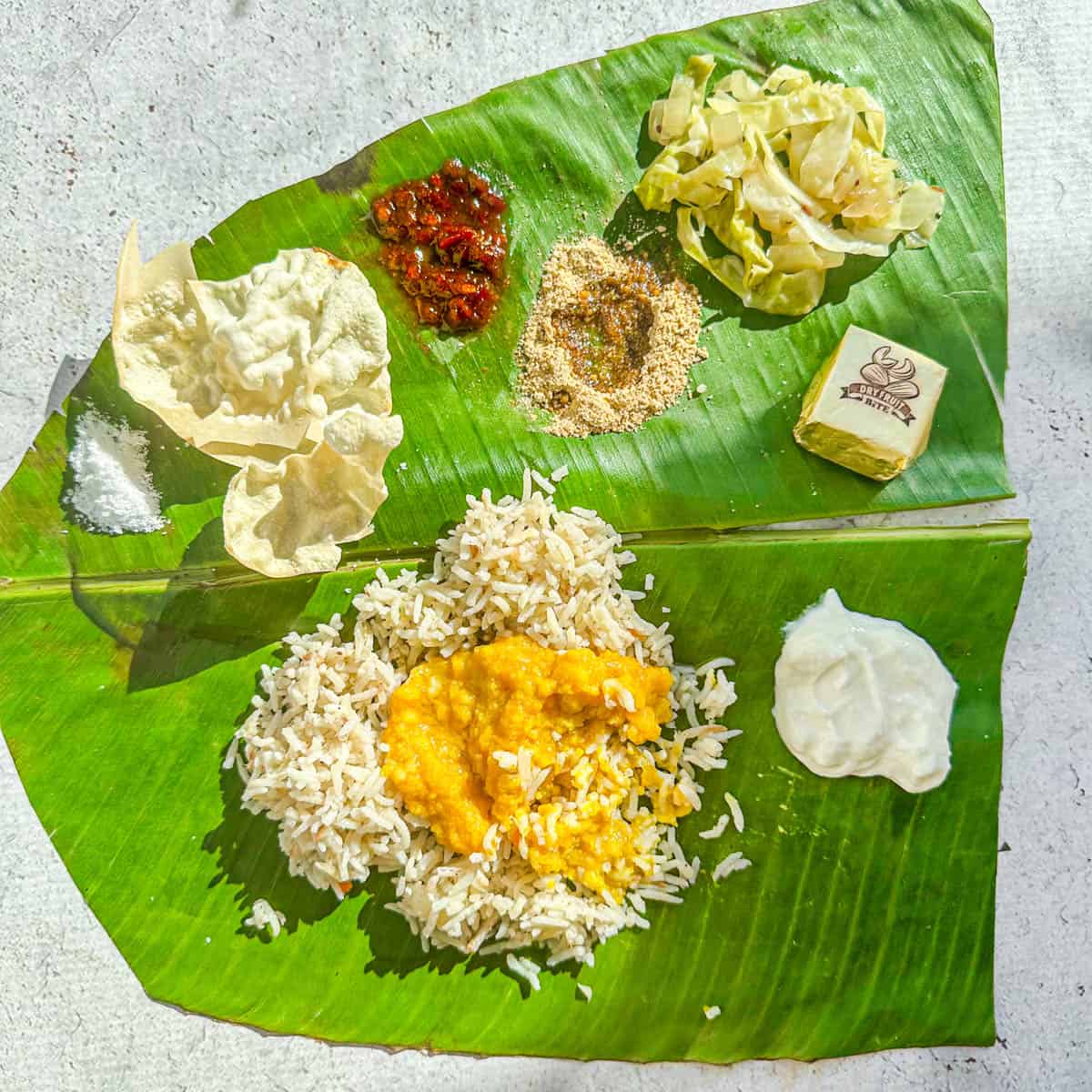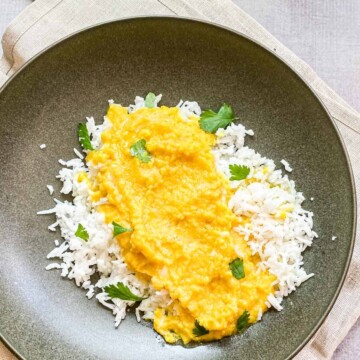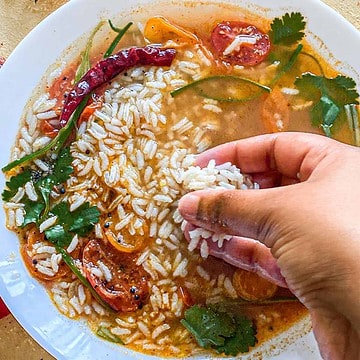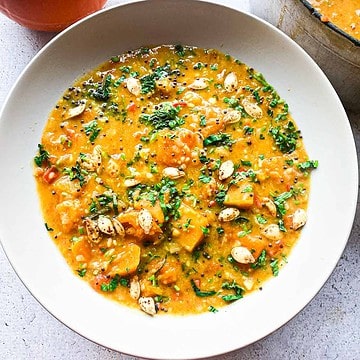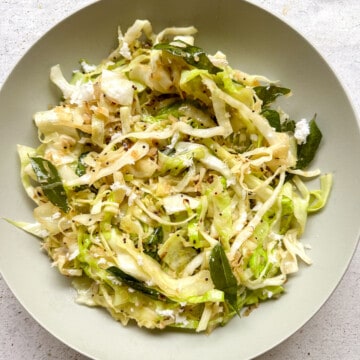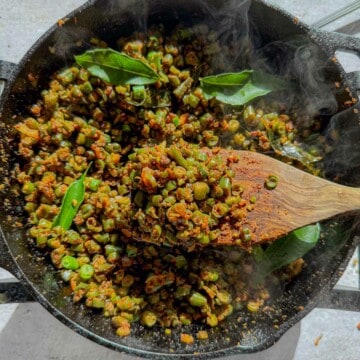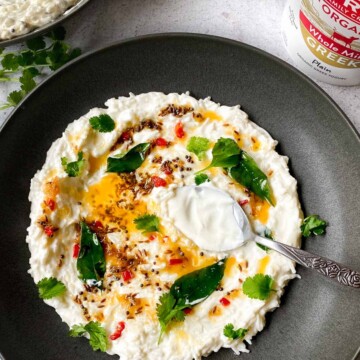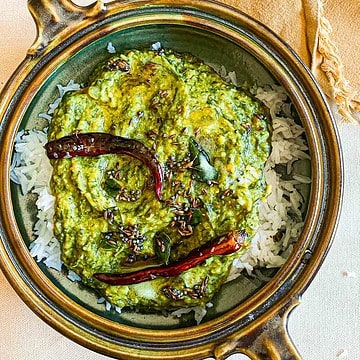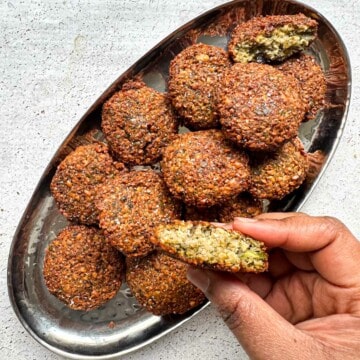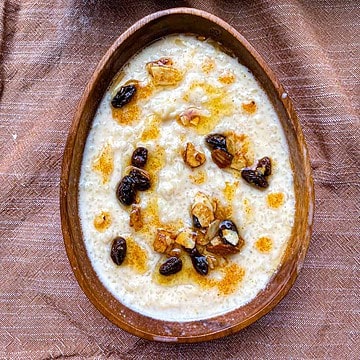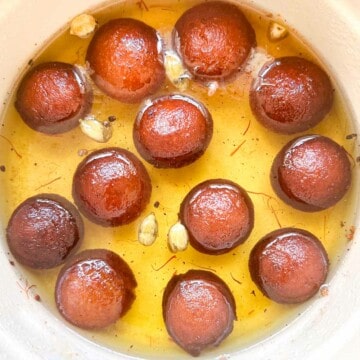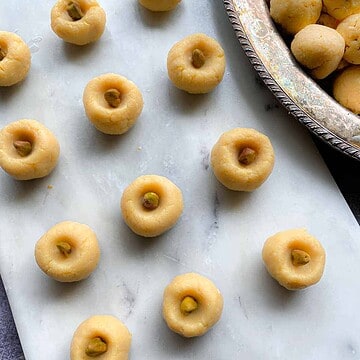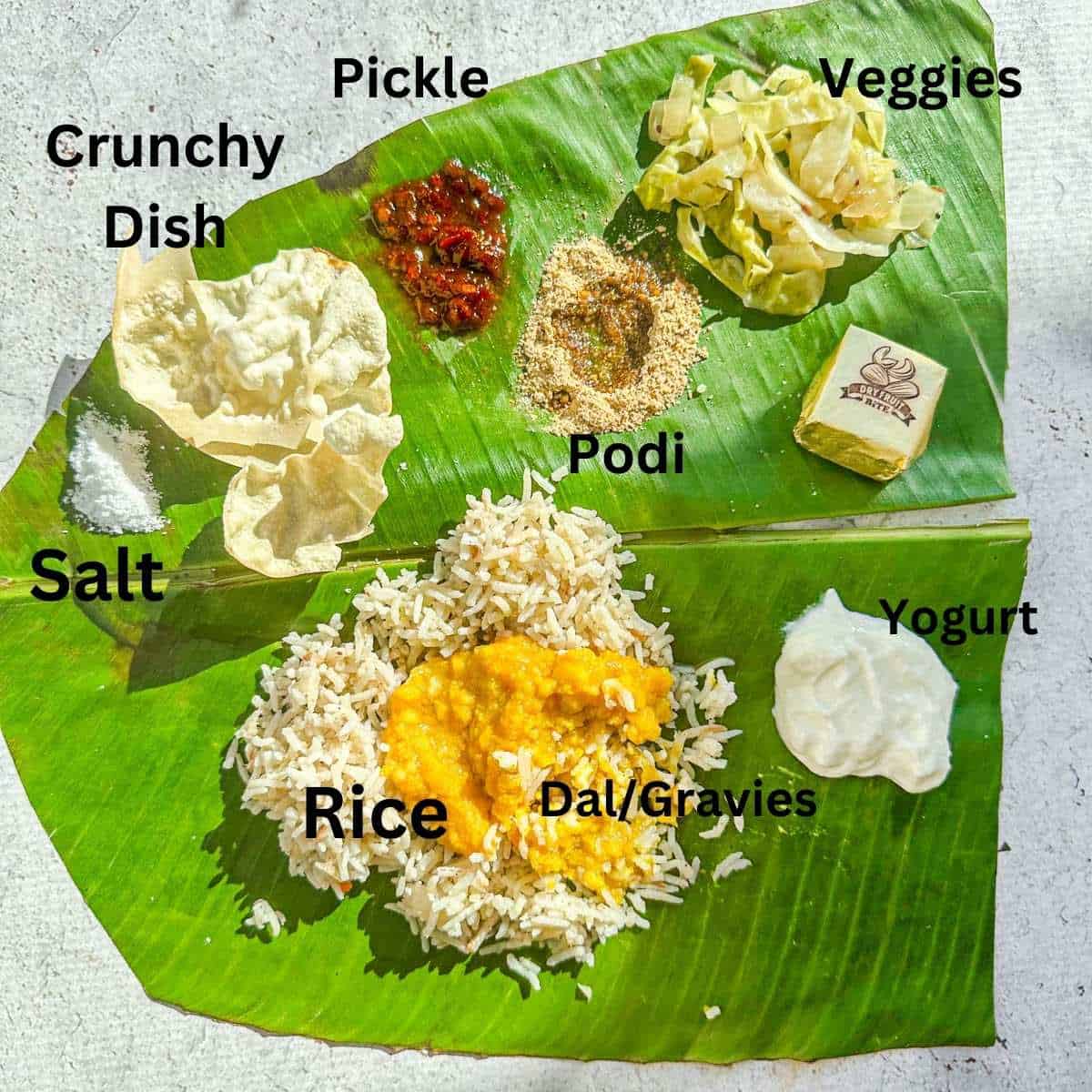Salt - A small pile of salt is the first thing kept on the banana leaf. This is so guests can season their dishes to their liking. Dessert - Typically a sweet is given at the start but also at the end of the meal. Dishes/Recipes Inspiration: pal payasam, javarisi payasam, gulab jamun, or kesar peda. Pickle - Mango, lemon, and lime pickle are a spicy and tart condiment. Podis and Chutneys (Optional) - Other condiments and spice blends to mix with the main dishes. Dishes/Recipes Inspiration: Milagai podi, thakkali thokku (tomato chutney). Crunchy Dish - Dishes that add a crunch to the meal. Dishes/Recipe Inspiration: Applam, papad, fryums, banana chips, masala vadas, murukku. Rice - Plain white rice is a must as the main carb but from there you can add other varieties. Dishes/Recipe Inspiration: Other rice varieties are tamarind rice, lemon rice, or pulao. If it a breakfast affair, you may find pongal or idlis. Ghee - Poured over the plain white rice or off to the side. Dal - A plain dal or a variation like spinach dal or chow chow kootu. Vegetable Dish - Something veggie forward to offset the carbs like a cabbage poriyal or beans poriyal. Sambar Rasam Thayir or Moore (yogurt or buttermilk) or thayir sadam (yogurt rice) - Served as a digestive and cooling dish. (Optional) Flatbreads - Flatbreads range from parotta, chapatis, rotis, and puris. (Optional) Gravy - A dish like korma or kolumbu. It depends on other carbs that you are serving. (Optional) Meat or seafood - Depending on the occasion, there may be meat or seafood.
The narrow part of the banana leaf is placed to the left and the wider part faces right. Why? This is because most people eat with their right hands in India and so the main courses that are bigger tend to be on the right hand side where the leaf is wider. Side dishes are placed on the upper half of the banana leaf and main dishes are placed closer on the bottom half of the banana leaf. Rice is always placed in the middle on the bottom half of the banana leaf. Other carbs are placed beside the rice on the bottom half. Rice is given in a smaller quantity in the beginning so that you can have space on the banana leaf but also so you can constantly get piping hot and fresh rice. Side dishes/desserts on the top half of the banana leaf are meant to be eaten from left -> right. Dal and sambar stay on the bottom half close to the rice. If they are particularly watery, a well is made out of the rice to help the liquids stay on the banana leaf. Salt, first dessert, pickles, and crunchy sides are placed on the upper left hand side and other vegetable side dishes, curries and kormas are on the upper right hand side. Rasam and Thayir (yogurt) can be brought in the beginning or can be brought towards the end of the meal. Final desserts are placed on upper right hand side of the leaf.
Sprinkle a bit of clean water on the banana leaf and lightly rub across the banana leaf. This is just an extra precausion to make sure that the banana leaf is wiped clean. Make sure that the narrow end of the banana leaf is on your left hand side and the wider part of the banana is on the right side. It is customary to eat a banana leaf meal with your right hand. You use your hands rather than utensils to mix the ingredients together and eat. Here are more details on how to eat Indian food with your hands. Mains will be served on the bottom half of the banana leaf that is closest to you. They can be paired with the side dishes that are on the top half of the banana leaf. Eat the side dishes (located on the top of the banana leaf), roughly from left -> right. You can always go back and forth, but in general you will start with a starting dessert (left), followed by spicy condiments, followed by other side dishes, and then your finishing desserts (right). You can always ask for seconds, so don’t load up on too many firsts. You will be given some rice in the middle, but take a smaller quantity in the beginning so that you can pace yourself and so you can get seconds of rice that are piping hot. Make a well with your rice for liquidy dishes. Sometimes liquidy dishes like sambars and rasams are placed in a small bowl but other times they are meant to be on the banana leaf. If so, partition the rice your want to be used for that gravy/dish. Then make a well with the rice so that the liquid can go in the middle and then be soaked up by the rice on the edges. Once you are done with a banana leaf meal, it is customary to fold the banana leaf in half towards you. This indicates that you are done eating and makes the banana leaf easier to pick up and dispose of. Folding the leaf towards you is also an indicator that you enjoyed the meal whereas folding it away from you indicates that you didn’t enjoy it.
As per usual, these aren’t strict rules but rather best practices.
